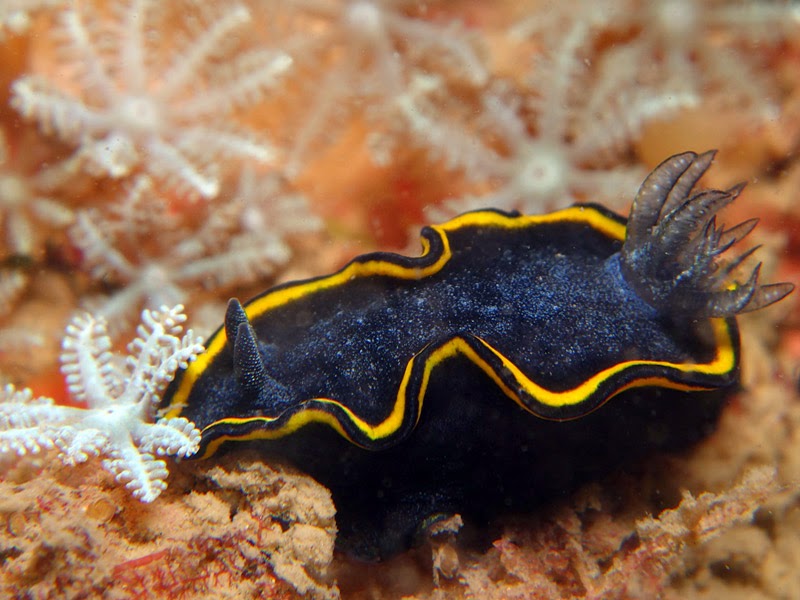Terry and David on this excursion consisting of 1 x 78 minute and 1 x 84 minute dives in water depths from 14m to 17.5mm. The water temperature was 24C on the bottom after dropping from 27C at the 12m mark. Visibility was poor at less than 2m and a slight surge was evident. Apologies for the dearth of good images.
With nearly all of our dives being shore dives right back prior to our Tulamben trip in Oct/Nov we thought we had better reacquaint ourselves with diving from a boat once again. The weather and bar conditions were perfect with the visibility being the only negative factor. Nevertheless we persevered with the use of a dive reel line concentrating mainly on looking for smaller species at the expense of covering the usual amount of territory. Mention should be made of the Pleurolidia juliae. The veracity of this species and Protaeolidiella atra has been in a state of flux for some time now. A new paper just published this month (Jan 2015): Protaeolidiella atra Baba, 1955 versus Pleurolidia juliae Burn, 1966: One or two species?, Carmona, Pola, Gosliner, Cervera, puts to rest all the longstanding confusion in finding that these are two separate and valid species.
Number of each species sighted: 1st dive/2nd dive
* Species with highest specimen count
Aegires flores -/1
Bornella anguilla 2/1
Chelidonura inornata -/1
Chromodoris kuiteri -/1
* Doriprismatica atromarginata 13/21
Elysia maoria -/1
Flabellina rubrolineata 1/-
Glossodoris vespa 1/1
Goniobranchus splendidus 2/-
Hypselodoris jacksoni -/2
Phyllidia ocellata 2/1
Phyllidia picta 1/1
Phyllidiella lizae 1/2
Phyllidiella pustulosa 2/7
Pleurolidia juliae 1/1
Pteraeolidia ianthina 2/-
Sagaminopteron ornatum 2/2
Pteraeolidia ianthina
Glossodoris vespa
Phyllidia ocellata
Bornella anguilla
Pleurolidia juliae
Chelidonura inornata
Elysia maoria
Aegires flores








